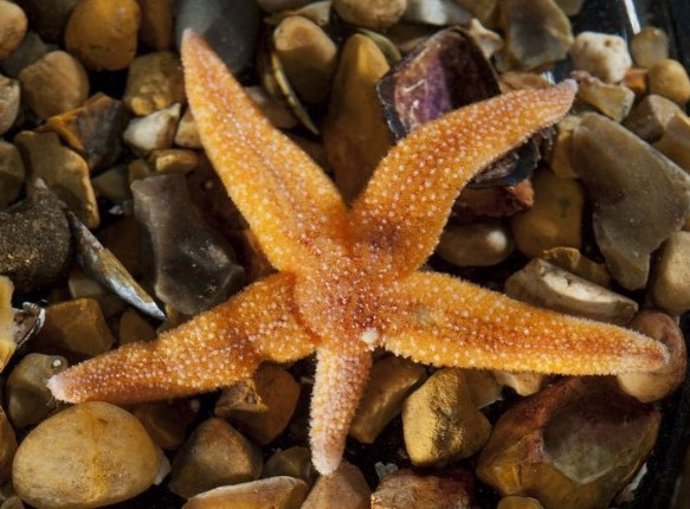Specimen of the common European starfish Asterias rubens with a regenerating arm. – MAURICE ELPHICK / QUEEN MARY UNIVERSITY OF LONDON
Aug. 30 () –
Researchers at Queen Mary University of London have discovered that a neurohormone allows starfish to escape from predators by shedding their limbs.
Autotomy, the ability of an animal to shed a body part to evade predators, It is a well-known survival strategy in the animal kingdom.While tail shedding in lizards is a well-known example, the mechanisms behind this process remain largely a mystery.
Now, scientists have uncovered a key piece of the puzzle. By studying the common European starfish, Asterias rubens, they identified a neurohormone similar to the human satiety hormone, cholecystokinin (CCK), as a regulator of arm detachment. Furthermore, the scientists propose that when this neurohormone is released in response to stress, such as an attack by a predator, it stimulates the contraction of a specialized muscle at the base of the starfish’s arm, causing it to snap. The findings are published in Current Biology.
Starfish possess incredible regenerative capabilities that allow them to regrow lost limbs over time. Understanding the precise mechanisms underlying this process could have important implications for regenerative medicine and the development of new treatments for limb injuries.
Dr. Ana Tinoco, a member of the London-based research group, who now works at the University of Cadiz, explained in a statement“Our findings shed light on the complex interplay of neurohormones and tissues involved in sea star autotomy. Although we have identified one key factor, other factors are likely to contribute to this extraordinary ability.”
Professor Maurice Elphick, Professor of Animal Physiology and Neuroscience at Queen Mary University of London, who led the study, highlighted its wider significance. “This research not only reveals a fascinating aspect of starfish biology, but also opens the door to exploring the regenerative potential of other animals, including humans. By unlocking the secrets of starfish self-amputation, we hope to advance our understanding of tissue regeneration and develop innovative therapies for limb injuries.”














Add Comment